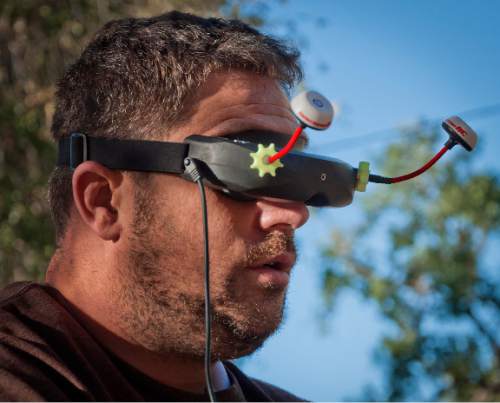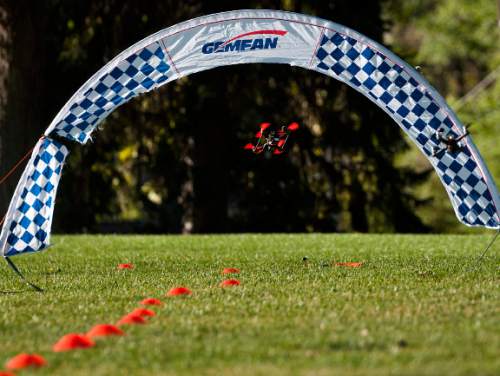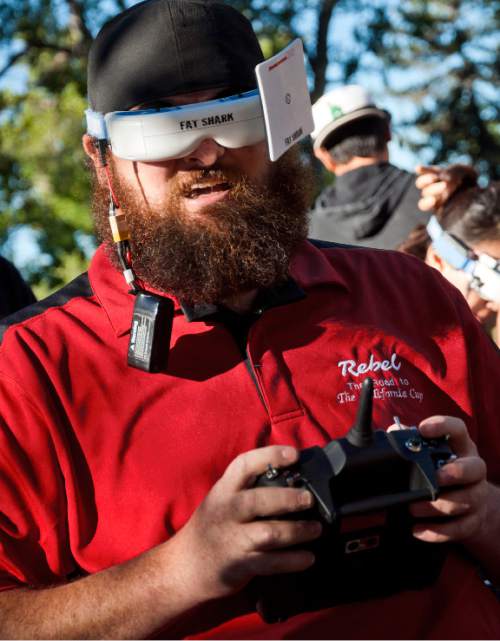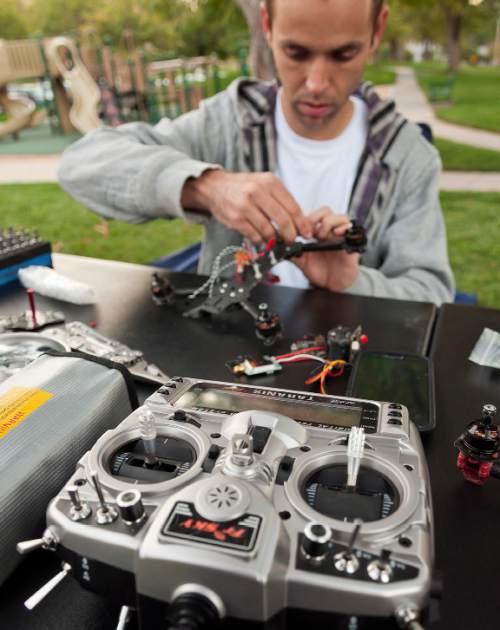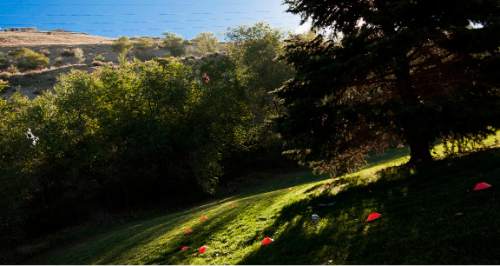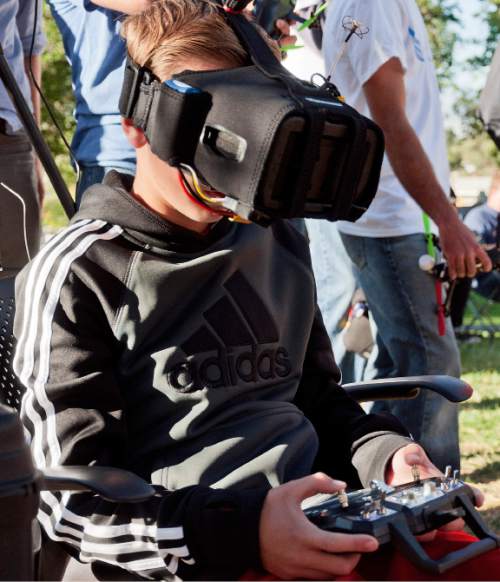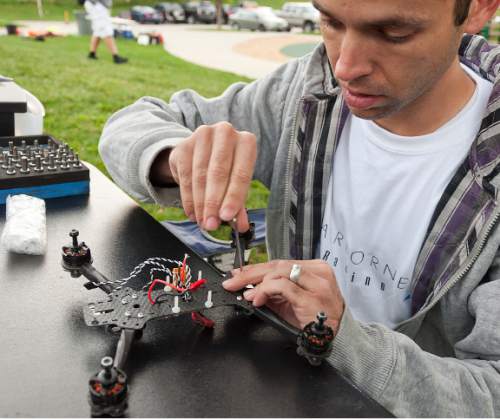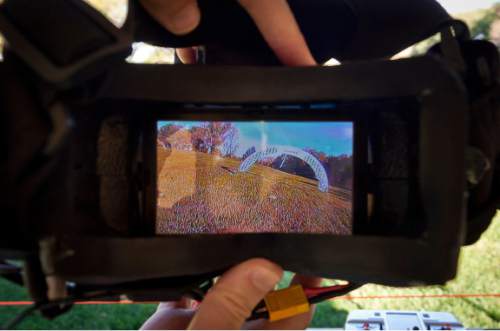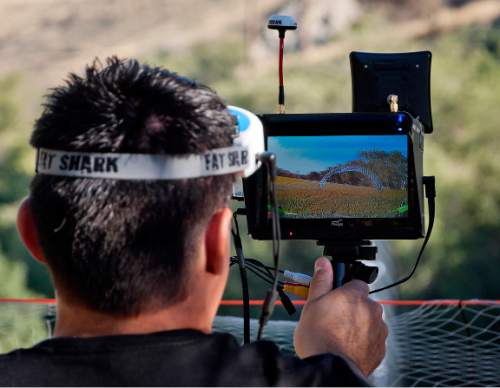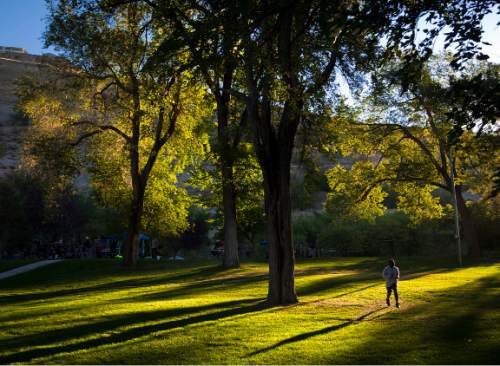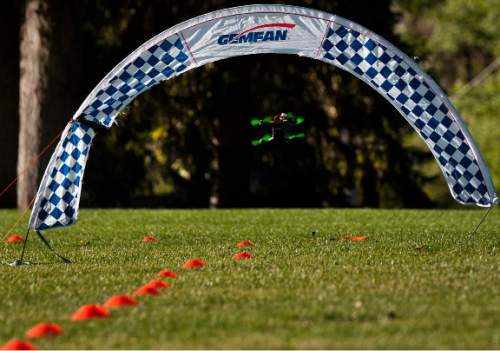This is an archived article that was published on sltrib.com in 2015, and information in the article may be outdated. It is provided only for personal research purposes and may not be reprinted.
The air was humming over Salt Lake City's Warm Springs Park on Saturday, and it was more than just the gnats.
The first Road to the Utah Cup drone race got off the ground with 26 participants flying in three competitive classes.
"It's fascinating," said spectator James Bushman, 30, of Cottonwood Heights."The race is inspiring. It's fantastic how they control them. It's pure skill."
Bushman started drone-flying recently and is looking forward to racing someday soon.
At Warm Springs, drone pilots negotiated a 350-yard course around the park that was laid out with pylons, bridges and a tunnel. Most drones were making a lap in about 25 seconds, said Matt Key of Drones Etc., the Salt Lake City-based company that sponsored the race.
The 250- and 330-class drones are capable of flying up to 60 mph. Saturday's course allowed pilots to hit about 40 mph on straightaways before banking into the next turn.
"The course is awesome," said pilot E.J. Duarte, who came down with team Thrust UAV from Boise. "It's technical, but you can get up to speed."
Fly-by-sight drones can be purchased for as little as $100. But the racing-class aircraft that are equipped with cameras and pilot goggles dress out at $1,200 or more.
"With the goggles, you are seeing what the camera sees," said Trevor Rose, 34, who drove with his family from Las Vegas. "It's the closest thing to racing without the risk of dying."
Rose is an engineering graduate student who saw his first drone race on YouTube earlier this year.
"That was it," he said. "There is a learning curve, but once you're there, it's tons of fun."
Frank Taylor came from West Point with his grandson, Boston Painter, 13, to watch the races.
"I've been looking at drones," Painter said. "I saw there was a race here and I said, cool, let's go."
The teenager does have a fly-by-sight tri-copter. But he wants to upgrade so he can race, too.
Most racing drones have four motors, each powering a propeller. They are driven by lithium polymer batteries, explained Mike Johnson of Thrust UAV, a drone retailer.
Many drone enthusiasts build their own custom aircraft by combining various components: frames, motors, speed and flight controls, video equipment and software.
The batteries are the heaviest part of the aircraft, Johnson noted. The lithium polymer powerhouses used in racing can keep the drone up for about five minutes.
Saturday's competition was broken down by class: the 250-class, the open class, and freestyle class. Five pilots competed in heats consisting of four laps, Key explained. Heat winners then raced each other to produce winners in each class.
Bushman can hardly wait to compete. But for now, he will be practicing in the park — away from trees that might grab his drone, and staying cognizant of the legal elevation limit for such aircraft: 400 feet.
"When you're a newbie, you have to be careful," he said. "But once you get into it, you can focus all your attention on it — just like a good hobby should be."


